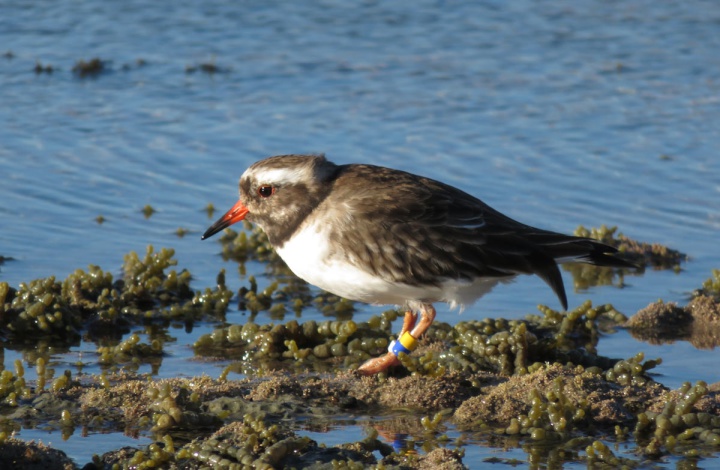Rare Tūturuatu washes up in Hawke’s Bay
17 November, 2017
Rare Tūturuatu washes up in Hawke’s Bay

One of New Zealand’s rarest animals the tūturuatu or shore plover is now even closer to extinction after one was found dead in Westshore this past week.
The bird – named Obow after her leg bands - was found by a member of the public - all the way from her Waikawa Island home off the tip of the Mahia Peninsula.
At times these birds like to visit the shores and rivers of the greater Hawke’s Bay area.
After Obow was handed over to Department of Conservation staff, she was sent to Massey University where an autopsy will be performed to determine the cause of death.
DOC Hawke’s Bay’s Operations Manager Connie Norgate said while the bird appeared to be in good health, the team at Massey did find some small pinprick sized holes in its chest.
“This suggests to us that this bird may have been killed by a predator,” she said.
“Tūturuatu are highly susceptible to predation – a single rat can wipe out an entire population.
“This makes biosecurity and pest control highly essential to protect this species.”
With only 250 left in the wild, the tūturuatu is critically endangered with the last naturally occurring population found on the remote Chatham Islands.
However, thanks to the captive breeding programme at Pukaka Mount Bruce and the Isaac Conservation Wildlife Trust, birds can be sourced to populate suitable new locations.
Ms Norgate says Waikawa Island has proved to be such a location.
“With limited predator free offshore islands with appropriate habitat, places like Waikawa are incredibly valuable for the future of this species,” she says.
“The more secure and safe population that can be built up will mean that this species has a better chance of survival.
“It also means that every single one of these birds count if we are going to save them from extinction.”
It reminds us that projects such as Predator Free 2050 are more important than ever.
Ms Norgate asks the public that if they see a tūturuatu please report these sightings to Nature Watch at naturewatch.org.nz or to their local DOC office.
“If you can observe the colours of the leg bands that can provide a lot of useful information to us,” she says.
–Ends–


 Gordon Campbell: On School Lunches, And The Coalition Government Eating The Young
Gordon Campbell: On School Lunches, And The Coalition Government Eating The Young NZ Police: New Zealand Police Involved In Global Operation Targeting AI-generated Child Sexual Abuse Material
NZ Police: New Zealand Police Involved In Global Operation Targeting AI-generated Child Sexual Abuse Material Greenpeace: Greenpeace Obtains Coordinates Of Coral Destruction NZ Government Refused To Reveal
Greenpeace: Greenpeace Obtains Coordinates Of Coral Destruction NZ Government Refused To Reveal Green Party: Greens Welcome Pause Of Works At Lake Rotokākahi And Call For Council To Work Constructively With Mana Whenua
Green Party: Greens Welcome Pause Of Works At Lake Rotokākahi And Call For Council To Work Constructively With Mana Whenua FIRST Union: Minister Goldsmith - Retail Workers Are Not Your Free Cops
FIRST Union: Minister Goldsmith - Retail Workers Are Not Your Free Cops Whaikaha Ministry of Disabled People: New Disability Stats Of Vital Importance
Whaikaha Ministry of Disabled People: New Disability Stats Of Vital Importance Electricity Authority: New Regulation Strengthens Protections For Medically Dependent Consumers
Electricity Authority: New Regulation Strengthens Protections For Medically Dependent Consumers


